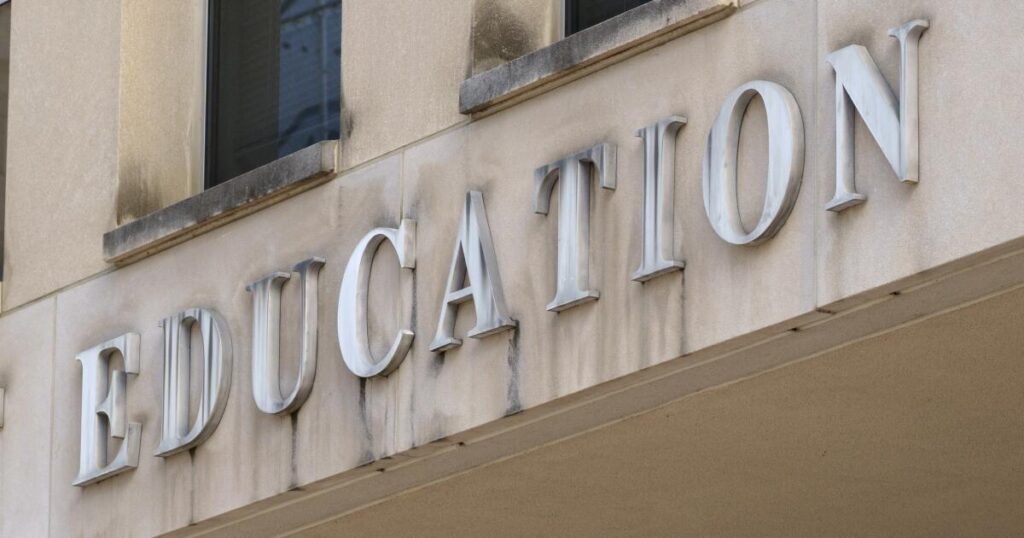
The Biden administration is facing increasing scrutiny as the White House outlines plans to significantly reduce federal funding for public education. The announcement comes amid widespread protests from educators, parents, and school administrators across the United States. Donald Trump, who has consistently advocated for the dismantling of public education, is at the center of this controversy, with the potential withdrawal of nearly $30 billion in aid hanging in the balance.
In late June, education funding was temporarily withheld, prompting Education Secretary Linda McMahon to assert that all programs were assessed to ensure they met the administration’s approval. However, this claim is met with skepticism. In the wake of the funding freeze, 24 states have filed lawsuits against the administration, accusing it of reneging on previously appropriated education funds.
The Supreme Court recently lifted an injunction against the firings of Department of Education staff, which has seen about 2,000 employees leave, either through layoffs or resignations. This decision allows the administration to proceed with its plans, despite ongoing legal challenges. Justice Sonia Sotomayor, in a dissenting opinion, highlighted the potential “untold harm” that could result from these actions, including the denial of educational opportunities and exacerbation of civil rights violations.
Impact of the Proposed Changes
McMahon has publicly stated that the department’s mission is to eliminate funding for school districts that do not demonstrate the eradication of diversity, equity, and inclusion (DEI) initiatives. Critics argue that this approach threatens to undermine decades of progress in narrowing the achievement gap between privileged students and their less fortunate peers. Federal programs, such as those established under Title 1 of the 1965 Elementary and Secondary Education Act, have historically aimed to provide support for disadvantaged students, funding smaller class sizes, tutoring, and after-school programs.
Research indicates that Title 1 funding has contributed to improved performance for students on the National Assessment of Educational Progress (NAEP), often regarded as the nation’s benchmark for K-12 education. Some of the most successful educational initiatives have come from programs designed to promote equity, such as the Harlem Children’s Zone and various charter schools.
The potential elimination of DEI programs poses significant risks for students with disabilities, who rely on the federal mandate to receive a “free and appropriate education.” Discontinuing these essential supports could have catastrophic consequences for vulnerable students, whose educational trajectories are often transformed by targeted assistance.
Legal Challenges and Future Implications
The administration’s reliance on a voucher system is another contentious issue. Under Trump’s proposed legislation, known as the “One Big Beautiful Bill Act,” a nationwide school voucher program would allow for unlimited tax deductions for donations that fund educational scholarships. This initiative could cost taxpayers up to $50 billion annually and would likely divert critical resources away from public schools, further widening the gap between affluent and disadvantaged students.
Studies from regions like Louisiana and the District of Columbia have shown that students participating in voucher programs often perform worse academically than their public school counterparts, particularly in subjects such as math. Education policy expert Joshua Cowen has concluded that these programs may even hinder academic growth more than the disruptions caused by the COVID-19 pandemic.
As public education advocates mobilize against these changes, legal action is being pursued in various states. Massachusetts Attorney General Andrea Joy Campbell has referred to the administration’s threats as unlawful and detrimental to children and families. While the White House may face significant legal challenges, the lengthy litigation process could delay any meaningful resolution, leaving schools and students vulnerable in the interim.
The future of public education in the United States hangs in the balance, with Congress tasked to uphold decades of bipartisan support for compensatory education and special programs. As legal battles unfold, the question remains whether lawmakers will act decisively to protect the educational rights of millions of students across the nation.







